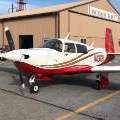Mooney Tailwind Tolerance
Mooney Tailwind Tolerance
25 members have voted
-
1. How much tailwind will you accept for takeoff?
-
01
-
2 knots1
-
4 knots8
-
6 knots7
-
8 knots0
-
10 knots7
-
12 knots1
-
14 knots+0
-
-
2. How much tailwind will you accept for landing?
-
01
-
2 knots2
-
4 knots11
-
6 knots5
-
8 knots0
-
10 knots5
-
12 knots1
-
14 knots+0
-
-
Members Online
- ArtVandelay
- IvanP
- Joe Linnebur
- Fly Boomer
- FlyLateNLife
- redbaron1982
- MarquezJC
- AspiringOwner
- BFF78
- Echo
- eman1200
- Marc_B
- kortopates
- Greg Ellis
- TCC
- Scottknoll
- LardLad
- hammdo
- mike_elliott
- Pinecone
- rklems
- 1980Mooney
- N201MKTurbo
- Cptcloud
- hoot777
- Hank
- WheelPantsOff
- Crawfish
- N231RF
- Stubby
- PierreZee
- Jim Peace
- Crow
- Bpvlbv
- John J


Recommended Posts